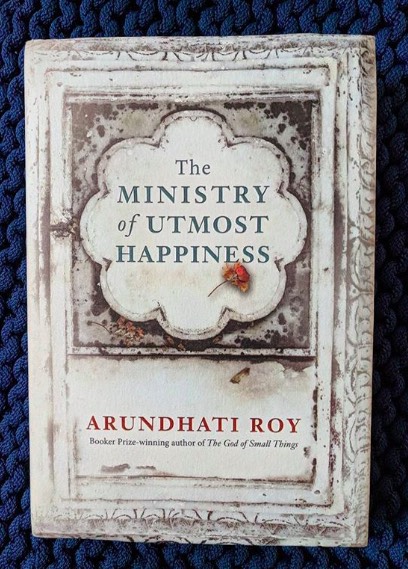Arundhati Roy
I didn’t read the reviews of this book, but I did sense disappointment on my various newsfeeds. Irrespective of that, this was a book that I had to read, because Arundhati Roy is one of my favourite writers. Not for The God of Small Things, which I don’t remember having a well formed opinion on, but for The Algebra of Infinite Justice, which she uses as a phrase in this book (pg 310). And I’m glad I did – the fire still burns!
The clues to this book’s agenda, if it does have one, can be read even before one begins really reading it. It is on the jacket in the form of a seemingly rhetorical question that actually gets answered – “How to tell a shattered story? By slowly becoming everybody. No. By slowly becoming everything.”. It is also documented in the book’s dedication – To, The Unconsoled.
The shattered story does indeed seem to have everyone and everything. It definitely has those elements which have been a part of all the non-fiction that the author has been writing – the people of Kashmir, Hindu nationalists, adivasis and Maoists. It also has the anti-corruption wave led by Anna Hazare (tubby Gandhian), the rise of Arvind Kejriwal (Mr.Aggarwal, who was an accountant), the omnipotence of Modi (“Gujarat ka Lalla”) and the saffron brigade, Maoist movements, and most definitely the mess that is Kashmir.
The Unconsoled are those who don’t really make it to pop culture. They are the forgotten people who are trampled as the world grinds forward on the path of progress. Aftab who became Anjum. Who lost her “number one spot in the media” when a new generation who spoke a new language (“cis-man, FtoM MtoF”) became a better representation of one world to another. The not-yet-Dr. Azad Bhartiya, who continues his 10+ year old fast at Jantar Mantar, lost among the other protesters ranging from Bhopal’s Union Carbide wholesale killing to the anti-corruption troops armed with Gandhi caps. In fact it’s a testament to the book’s extreme character bias that (probably) the only couple of people that one might say are ‘regular’ happen to be an intelligence agent (Biplab) stationed in places like Kashmir and Kabul, and a journalist (Naga) neither of whose lives or conditions can really be considered regular! Many of the characters seem to be based on or at least inspired by real life – Anjum (Mona Ahmed), Tilo and her mother (the author and her mother).
There is something about the places that serve as the backdrop too. They seem to be in this world and yet somehow above or outside it. A graveyard that Anjum converts into a sanctuary for world-rejects. A window through which the dead talk to the living. Old Delhi, which lives in many centuries – refusing to let go of the past while being dragged forward by the future. Kashmir, the world of terrorists and jihadis, agents and double agents and triple agents, and yes, victims. A place where you could be alive one moment, and dead the next.
It’s everything that Arundhati Roy has been writing in non-fiction. By framing it in fiction, she probably aimed to give it a platform where the words will at least be read my more people. Not to mention, an escape from charges of anything from liberalism to sedition. Sometimes racy, sometimes languorous, it’s an intense, unforgiving and maybe even a brutal narrative. It’s a book that doesn’t care about what will be told about it, and in that lies its freedom. It has a point of view, and not really the binary one that I’d have expected from the author. Its vantage point is on the side of humanity, or maybe the fringes of it, and it draws our attention to the world we look at everyday, but don’t really see.

